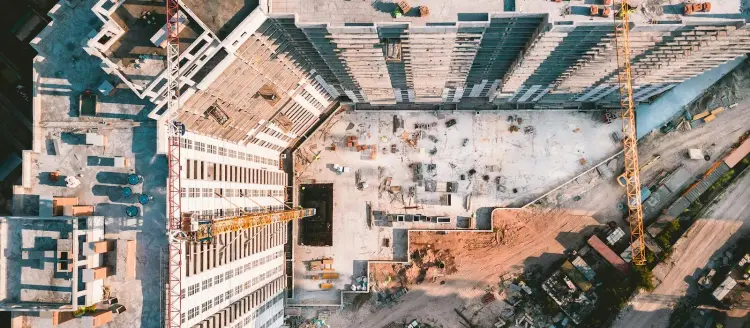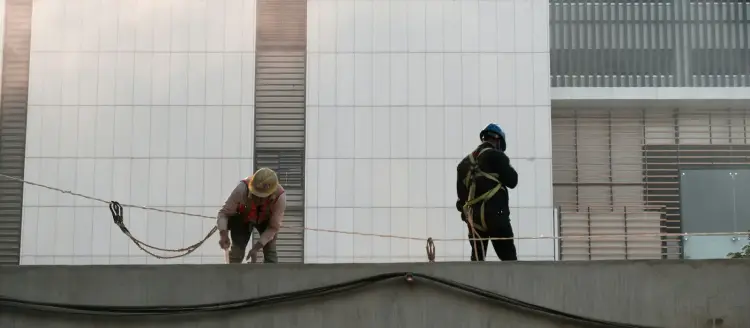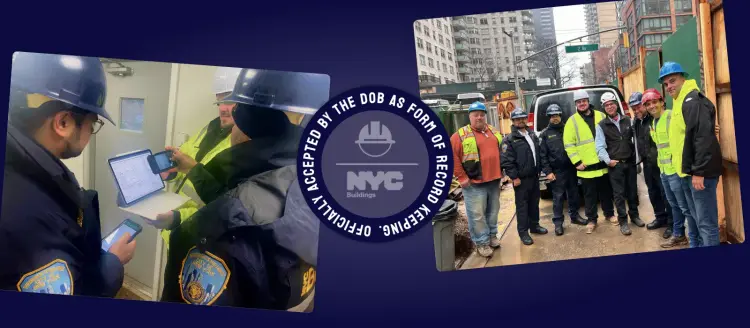Safety Best Practices
Stefano Braganti
Real-Time Workforce Visibility Ends Labor Drift & Rework
Labor drift, rework and schedule slips thrive when you can't see head-count live. Learn how smart turnstiles & dashboards give GCs real-time visibility.

Safety is paramount in any bustling city, and New York City takes this responsibility seriously by implementing stringent regulations to protect its residents and visitors during construction or demolition activities. One such essential safety measure is the installation of sidewalk sheds, also known as construction sheds or scaffolding. In this article, we will delve into what sidewalk sheds are, who installs them, the requirements to set them up, daily inspections, six-month inspections, and other vital information related to these temporary structures.
A sidewalk shed is a temporary protective structure designed to safeguard pedestrians from potential hazards posed by construction or demolition work happening above or adjacent to a sidewalk. These sheds are specifically engineered to shield passersby from falling debris, tools, or any other materials that might pose a risk. By creating a covered walkway, sidewalk sheds ensure that pedestrian foot traffic can continue safely, even amidst ongoing construction activities.
The responsibility for installing sidewalk sheds in NYC lies with the property owner or the party undertaking the construction or demolition project. This ensures that the individuals most familiar with the project and its potential hazards are accountable for implementing the necessary safety measures.
Property owners must install a sidewalk shed when constructing a building more than 40 feet high, demolishing a building more than 25 feet high, or when danger necessitates this type of protection. Sidewalk sheds must be removed immediately once construction, demolition or remediation work is complete.
To set up a sidewalk shed in NYC, the following requirements must be met:
a. Approved Drawings: Detailed drawings of the sidewalk shed design, showcasing its structural integrity and compliance with safety standards, must be submitted to the New York City Department of Buildings (NYCDOB) for approval.
b. Letter from Engineer: A letter from a licensed engineer or architect is required, affirming that the sidewalk shed design meets all necessary safety regulations.
c. Permit: Before installation, the property owner or contractor must obtain a permit from the NYC DOB to erect the sidewalk shed.
Once the sidewalk shed is in place, daily inspections are mandatory. The individual responsible for the construction or maintenance project must inspect the shed each day to ensure its structural stability and the safety of pedestrians. Any issues or damages found during the inspection should be addressed promptly.
Furthermore, it is crucial to document these daily inspections thoroughly. Keeping a log of the inspections, complete with dates, times, and observations, will provide a valuable record of compliance and due diligence.
In addition to daily inspections, NYC sidewalk sheds must undergo a comprehensive inspection every six months. This inspection aims to assess the shed's condition over time and ensures that it continues to meet the necessary safety standards.
Despite the vital role they play in enhancing safety, sidewalk sheds can be subject to various violations. Some of the most common violations associated with sidewalk sheds in NYC are:
a. Failure to Obtain a Permit: Violations may occur when property owners or contractors fail to secure the required permit from the NYC DOB before installing a sidewalk shed.
b. Inadequate Daily Inspections and Documentation: Violations can be issued if daily inspections are not conducted as required, or if the documentation of these inspections is incomplete.
c. Missing Engineer or Architect Letter: Sidewalk shed installations require a letter from a licensed engineer or architect, confirming compliance with safety standards. Failing to provide this letter may lead to violations.
d. Unsafe or Damaged Sidewalk Sheds: Violations may be issued if a sidewalk shed is found to be unsafe or in a state of disrepair during inspections. Timely maintenance and repairs are crucial to ensuring the shed's structural integrity.
Specifically, violations related to missing documentation associated with sidewalk sheds have also been issued in NYC. These violations highlight the importance of submitting proper drawings, engineer letters, and obtaining permits before erecting sidewalk sheds. It is crucial to ensure that all necessary paperwork is in order to maintain compliance with the city's safety regulations.
Sidewalk sheds play a critical role in upholding safety standards during construction and demolition activities in NYC. By providing a protective walkway for pedestrians and requiring rigorous inspections, these temporary structures ensure that NYC remains safe for all. Complying with regulations and staying vigilant in maintaining sidewalk sheds exemplifies a commitment to public safety and responsible construction practices, making NYC a safer place for everyone.

Risk Manager with 10+ years of experience in the construction industry. Passionate supporter of the NFL's New York Giants.
Safety Best Practices
Stefano Braganti
Labor drift, rework and schedule slips thrive when you can't see head-count live. Learn how smart turnstiles & dashboards give GCs real-time visibility.

Safety Best Practices
Stefano Braganti
Stop-Work Orders crush margins. Digital safety dashboards catch risks early, prevent claims, and protect your 3% fee.

Safety Best Practices
Stefano Braganti
NYC DOB formalizes digital record-keeping: what the bulletin says, why it matters, and how SafetyClerk helped make it happen.

together
SafetyClerk is the construction management platform that makes safety compliance, and risk management of your job site simple and visible in one click.
Stay on
the loop!
ConstructionClerk - 2025 - All rights reserved
ConstructionClerk - 2025 - All rights reserved